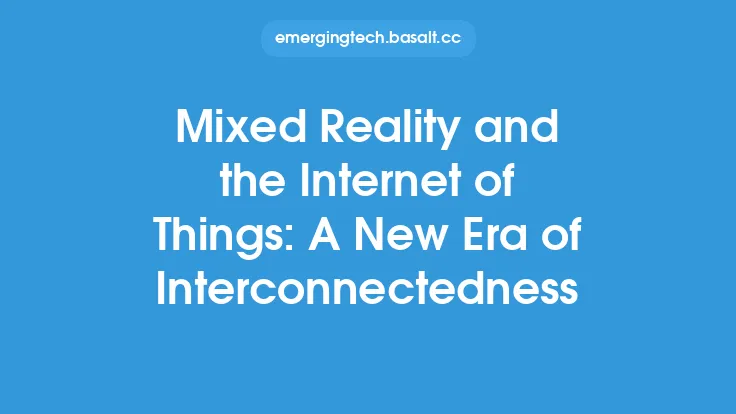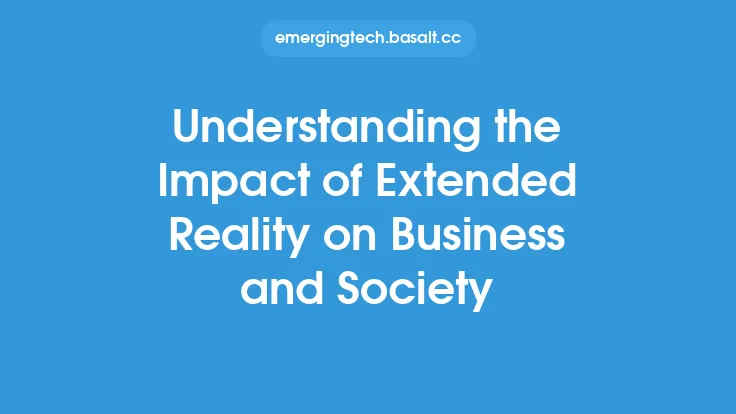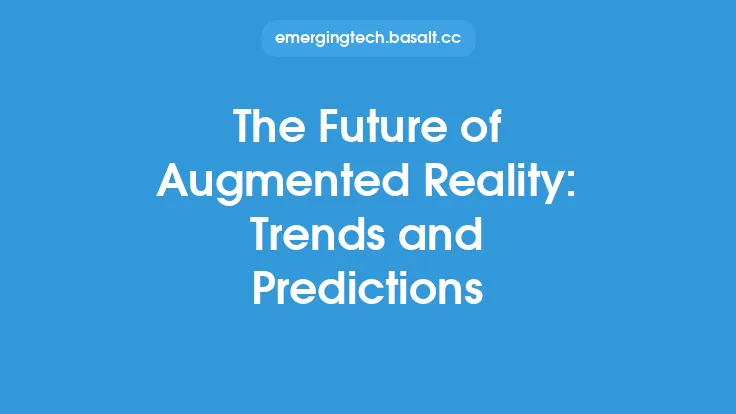The concept of Extended Reality (XR) has been gaining significant attention in recent years, and for good reason. As technology continues to advance, the lines between the physical and digital worlds are becoming increasingly blurred. XR, which encompasses Virtual Reality (VR), Augmented Reality (AR), and Mixed Reality (MR), is at the forefront of this convergence. In this article, we will delve into the insights and implications of Extended Reality, exploring its underlying technologies, applications, and the potential impact on various industries.
Introduction to Extended Reality Technologies
Extended Reality is a broad term that refers to the combination of virtual, augmented, and mixed reality technologies. These technologies use a combination of hardware and software to create immersive, interactive, and engaging experiences. VR, for instance, uses a headset or other device to transport users to a completely virtual environment, shutting out the physical world. AR, on the other hand, overlays digital information onto the real world, using devices such as smartphones or smart glasses. MR combines elements of both, allowing users to interact with virtual objects in the real world.
The underlying technologies that enable XR include advanced computer vision, machine learning, and sensor systems. These technologies allow XR devices to track the user's movements, recognize their environment, and render high-quality graphics in real-time. The development of more advanced and affordable XR hardware, such as standalone headsets and high-resolution displays, is also driving the growth of the XR market.
Applications of Extended Reality
The applications of Extended Reality are diverse and widespread, spanning industries such as entertainment, education, healthcare, and manufacturing. In the entertainment sector, XR is being used to create immersive gaming experiences, virtual concerts, and interactive movies. In education, XR is being used to create interactive and engaging learning experiences, such as virtual field trips and 3D simulations.
In healthcare, XR is being used for therapy, treatment, and training. For example, VR is being used to treat anxiety disorders and PTSD, while AR is being used to provide surgeons with real-time guidance during operations. In manufacturing, XR is being used to improve design, production, and maintenance processes. For instance, AR is being used to provide workers with step-by-step instructions and virtual guidance, reducing errors and improving efficiency.
Extended Reality in Industry and Commerce
The potential impact of Extended Reality on industry and commerce is significant. In the retail sector, XR is being used to create immersive and interactive shopping experiences, such as virtual try-on and product demonstrations. In the real estate sector, XR is being used to create virtual property tours and interactive floor plans.
In the automotive sector, XR is being used to create immersive and interactive car-buying experiences, such as virtual test drives and car configurators. In the travel and tourism sector, XR is being used to create immersive and interactive destination experiences, such as virtual tours and travel guides.
Technical Challenges and Limitations
Despite the many benefits and applications of Extended Reality, there are still several technical challenges and limitations that need to be addressed. One of the main challenges is the high cost of XR hardware and software, which can make it inaccessible to many individuals and businesses.
Another challenge is the limited content availability, which can make it difficult for users to find engaging and interactive experiences. The development of more advanced and affordable XR hardware, such as standalone headsets and high-resolution displays, is also driving the growth of the XR market.
Future Developments and Trends
The future of Extended Reality is exciting and rapidly evolving. One of the main trends is the development of more advanced and affordable XR hardware, such as standalone headsets and high-resolution displays. Another trend is the growth of cloud-based XR services, which will allow users to access XR experiences from anywhere and on any device.
The development of more advanced XR software, such as machine learning and computer vision algorithms, is also driving the growth of the XR market. The use of XR in emerging technologies, such as 5G and the Internet of Things (IoT), is also expected to drive growth and innovation in the XR market.
Conclusion and Recommendations
In conclusion, the convergence of physical and digital worlds is a reality that is being driven by the growth and development of Extended Reality technologies. The applications of XR are diverse and widespread, spanning industries such as entertainment, education, healthcare, and manufacturing.
To take advantage of the many benefits and opportunities of XR, individuals and businesses should stay informed about the latest developments and trends in the XR market. They should also invest in XR hardware and software, and develop strategies for creating and deploying XR experiences.
By doing so, they can unlock the full potential of XR and create immersive, interactive, and engaging experiences that can transform industries and revolutionize the way we live and work. As the XR market continues to grow and evolve, it is likely that we will see even more innovative and exciting applications of XR in the future.





